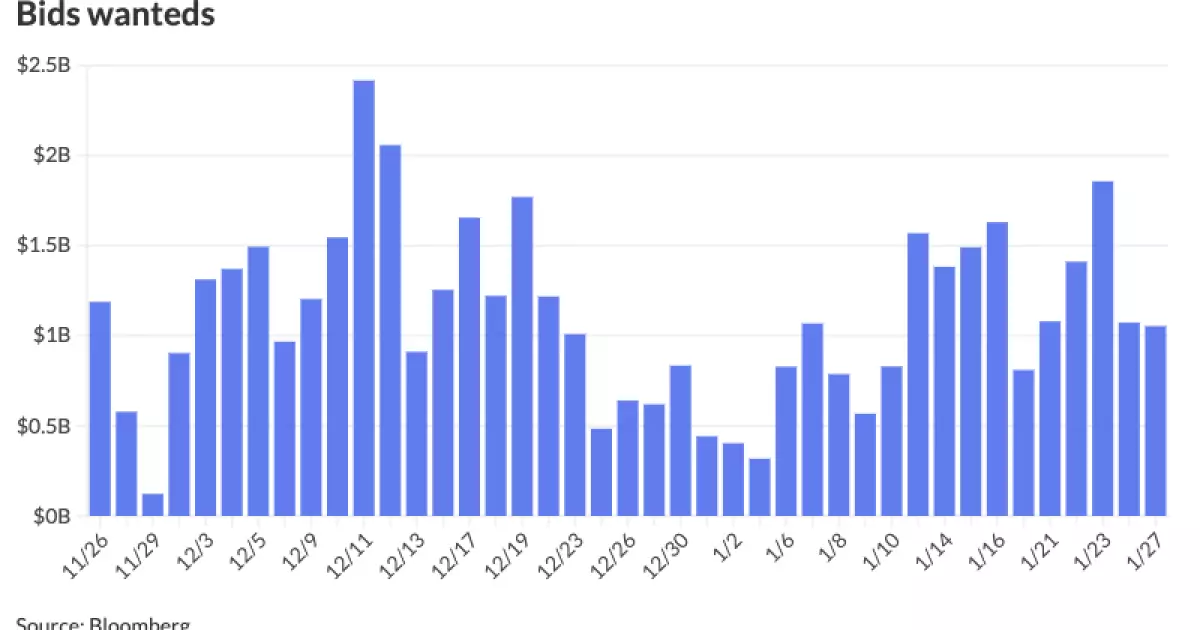In the realm of municipal bonds, a sense of stability characterized the market as of Tuesday, building anticipation for the upcoming Federal Open Market Committee meeting. Traders noted minimal fluctuations in U.S. Treasury yields while equities showcased an upward trajectory. This stability might suggest a cautious optimism among market participants, yet underlying factors indicate potential volatility as political and economic landscapes continue to evolve. An analysis from BlackRock highlights how President Donald Trump’s approach to deregulation could stimulate economic growth, but new tariffs may introduce incremental inflationary pressures that complicate the investment climate.
This landscape brings about questions regarding the ability and willingness of the Federal Reserve to adjust interest rates. Matt Fabian, a municipal market analytics partner, suggested that the likelihood of a rate cut in the imminent Fed meeting appears slim due to robust inflation metrics and strong economic performance. As we advance further into the year, the Fed’s strategy may pivot towards a slow-down of rate cuts, reflecting a cautious yet resilient economic environment that has thus far resisted significant downward pressure.
BlackRock’s strategists express skepticism about any impending rate increases this year. They predict a steepening of the Treasury yield curve, attributing this to an engaged Federal Reserve and fiscal concerns including a growing deficit. The evacuation of capital from municipal mutual funds, reportedly reaching $166 billion in outflows over the last two years, raises critical questions about investor confidence and the underlying fundamentals sustaining market performance.
Moreover, the consistent retail demand within the specified managed accounts suggests a significant dichotomy between institutional and retail investors. The continued appetite for municipal bonds among retail investors can be linked to the allure of both current income and stable yields, which counters the broader market volatility. Nevertheless, one must ask: how sustainable is this demand, especially against the backdrop of changing tax policies that could fundamentally disrupt market dynamics?
As we dive deeper into the year, tax legislation will play a crucial role in shaping demand forecasts within the municipal bond market. Potential alterations in tax policies, particularly surrounding deductions for state and local taxes, could negatively impact demand from high-tax states, effectively diminishing the attractiveness of municipal bonds as tax-efficient investments. Awareness of such dynamics is paramount for institutional investors, as changes in corporate tax rates could further marginalize the institutional sector’s engagement in bond purchasing.
Additionally, the potential adjustments to private activity bonds and alternative minimum tax (AMT) provisions could signal worsening demand from particular investment groups. Hence, the market faces a precarious balance; favorable tax policies could stimulate bond purchases, while adverse reforms could yield an adverse reaction in investor interest.
This week saw active pricing among significant municipal bond issues, hinting at the intricate movements taking place in the market. Goldman Sachs led the pack with a substantial issuance for the Oklahoma Turnpike Authority, while RBC Capital Markets facilitated transactions for the Columbus Regional Airport Authority. It highlights the ongoing financing needs of public infrastructure amidst shifting capital paradigms.
Despite these numerous issuances, we observe competitive pricing pressures driving yields, which may undermine investor margins. Municipal yields remain relatively stable, although the slight upticks in long-dated securities suggest a cautious posturing among fixed-income investors.
Primary market activity also underscores a busy week of new issuances, with upcoming bond offerings from Temple University and Mesa County Valley School District, among others. This suggests that demand remains resilient at the retail level, with investors likely capitalizing on favorable rates.
The municipal bond market sits at a crucial juncture where the interplay of economic indicators, Federal Reserve strategies, and tax policy shifts will determine investor sentiment. Despite a foundation of stability within the pricing structure, the looming uncertainties present a challenging yet intriguing outlook as we delve into 2023. Engaged investors must navigate these choppy waters with acute awareness of the macroeconomic forces influencing market dynamics. Only time will reveal whether we will witness continued demand for municipal bonds or if the anticipated volatility will compel a reevaluation of investor strategies across the spectrum. As the year unfolds, maintaining vigilance will be key to making informed investment decisions in this complex landscape.

